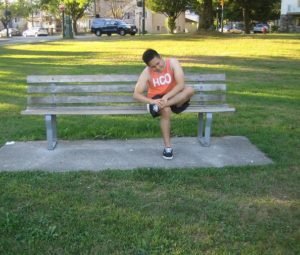Many individuals do not think of dancing as a sport, but the physical demands placed on the body when dancing can put an individual at risk for dance injuries just like with other sports. It is important to note that most professional dancers start dancing at 5 or 6 years old. The repetitive practice of movements that entail strength, flexibility and endurance puts them at high risk for overuse injuries.
Common dance injuries
Most cases of dance injuries typically occur at the ankle, foot, lower leg as well as the hip and lower back. Always bear in mind that the ankle, foot or lower leg area are vulnerable areas to various injuries including tendon injuries, stress fractures, strains and sprains. These injuries manifest with higher frequency among dancers as they age, thus it is vital to emphasize what younger dancers can do in order to prevent future dance injuries.
Causes of dance injuries
Dancers are subjected to various risk factors that can lead to dance injuries. The usual issues that cause dance injuries include the following:
- Length of training
- Form of dance and frequency of the classes, rehearsals and performances
- Equipment used particularly shoes
- Environmental conditions such as cold studios and hard flooring
Always use properly fitting shoes and clothing. - Nutritional deficiencies
- Body alignment of the individual
- History of previous injuries
Prevention of dance injuries
An injury-free and fun environment is vital in enjoying a lifetime of physical activity and dance. With a few measures to observe, dancers can continue to enjoy the activity free from pain. The following must be taken into consideration in order to prevent dance injuries:
- Always use properly fitting shoes and clothing
- Drink plenty of fluids during a dancing session
- Pay close attention to correct techniques while dancing
- Resist the temptation to dance despite the presence of pain
- Always perform correct warming-up exercises and cool-down
- Be aware of the limits of the body and avoid pushing too fast rapidly
Role of parents
Parents have a vital role in preventing dance injuries. Initially, parents should not encourage children to increase to higher levels of training at an unsafe rate, specifically ballet dancers. Parents must ensure that when starting pointe training, the child’s feet and ankles develop enough strength. Remember that 12 years old is the generally accepted lower limit but maturity and strength are more vital than the age.
When to seek medical care
The doctor has a vital role in managing and rehabilitating dance injuries, but also in preventing them. Physical therapists and other health professionals can start and facilitate screening sessions for dancers to identify potential issues and prevent future dance injuries.
It is also vital that the dancer must return after sustaining any dance injury only after clearance was provided by a healthcare professional.

